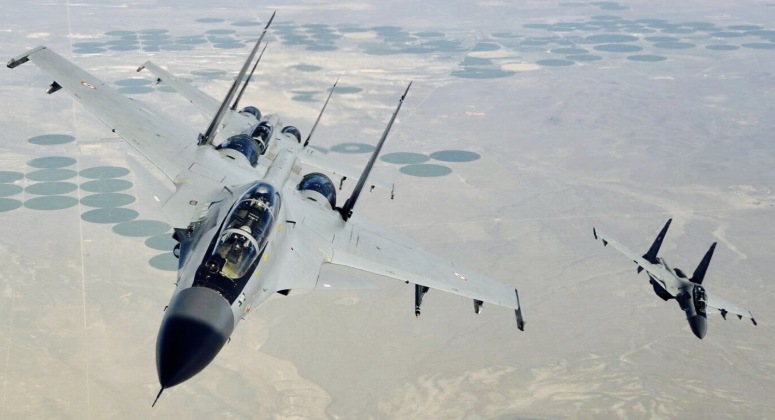News
New Russian Fighters Have Just Increased This Indian Frontline Squadron’s Reach By 2800 Percent
The Indian Air Force’s Number 4 Squadron has phased MiG-21BiS fighters out of service after 57 years of operating various MiG-21 variants, which has both marked the end of an era for the unit and revolutionised its combat potential. The Air Force announced to this effect regarding the transition: “the MiG-21 Bison aircraft were seen for the last time in the skies of Uttarlai in Barmer district of Rajasthan… The MiG-21 Bison flew alongside the Su-30 MKI to mark the occasion.” The ministry separately added that “this change signifies the unwavering commitment of the Indian Air Force to modernise and at the same time protect the skies of the nation.” The MiG-21s are notably not being replaced by fighters from a similar weight range, but rather by aircraft over three times their size – namely Su-30MKIs which the country has continued to acquire from Russia and which currently form the backbone of the fleet.

The Su-30MKI is considered by far the most capable fighter class in the Indian Air Force, with approximately 270 aircraft in service split between 11 squadrons and more continuing to be received. The Indian Defence Acquisition Council in September approved further Su-30MKI acquisitions, with the fleet speculated to potentially reach over 300 aircraft. The fighter far surpasses the MiG-21 in all major performance parameters, with the aircraft having the potential to cover far greater areas of Indian airspace than the much smaller Soviet built jets could. The Su-30MKI’s endurance is significantly higher than that of any Western fighter class, and by far the highest anywhere in South Asia, which compared to the relatively short range of the MiG-21 allows the newer jets to cover an area 29 times as broad with a full weapons load – meaning an increase of 2800 percent in the area each fighter in Number 4 Squadron can now cover. The Su-30’s advantage in area coverage is significantly greater still when considering the massive discrepancy in armaments between it an the MiG-21, particularly for air to surface and anti shipping missions, with the Su-30MKI having integrated BrahMos cruise missiles with 450km ranges. The squadron’s new range alone will totally transform how the aircraft can operate and the range of missions they will be able to participate in.

The Su-30MKI’s advantages for air to air engagements are similarly extreme, with the aircraft heavily customised for Indian requirements merging the capabilities of the Su-30 long range interceptor with technologies from the cancelled Su-27M and Su-37 air superiority fighters. The result was an aircraft which in the early 2000s was widely considered the world’s most capable fighter class for air to air engagements. The transition away from the MiG-21 is nevertheless expected to increase Number 4 Squadron’s operational costs significantly due to the Su-30’s much higher maintenance needs as a far larger aircraft. The extent of this increase will likely be partly reduced by the age of the MiG-21 airframes which were long since expected to have been retired, and have required more maintenance as they have aged. Moving beyond the capabilities of current Su-30MKI variants, the Indian Air Force is currently seeking to integrate a new AESA radar onto the fighters to revolutionise their situational awareness and electronic warfare capabilities, and is also considering acquisitions of the Su-30’s successor the Russian Su-57 fighter either for ‘off the shelf’ purchases or for license production in India.












